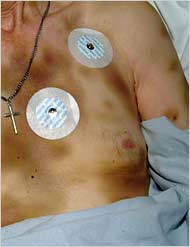Forensic Skills Seek to Uncover Elder Abuse

From Today's NY Times:
Forensic Skills Seek to Uncover Elder AbuseBy Jane Gross Published: September 27, 2006SANTA ANA, Calif. — The elderly man in the emergency room was covered with bruises, some purple and others fading to yellow. Despite signs of dementia, he told the same story over and over: His wife’s burly home health aide had beaten him. But the health aide and the wife insisted he had fallen. Now it was up to the members of Orange County’s Elder Abuse Forensic Center to decide which story was true.
Read Entire article(free registration may be required to read NY Times articles on-line)
The REAL Case of the Black Dahlia

The
Black Dahlia is the story of aspiring actress Elizabeth Short, whose body was found on January 15, 1947.
 "When it comes to the study of murder cases, nothing tops the case of the Black Dahlia. It has stumped thriller writers and readers for more than half a century, and will continue to do so."
"When it comes to the study of murder cases, nothing tops the case of the Black Dahlia. It has stumped thriller writers and readers for more than half a century, and will continue to do so."
What, exactly, can be evidence?

The forensic investigator has a big burden, as
Evidence constitutes the most important factor to determining a just verdict, and the time may come when attorneys will pore over every detail of how evidence was collected and handled. The chain of evidence or
custody chain is important to maintain, and even the smallest gap in that chain is like the grand canyon when the time comes to present it in court.
The chain of evidence is vital in forensics, and it is maintained no matter what branch of forensics is involved. Even
veterinarians can be forensic scientists.
Evidence can take many forms, fingerprints, blood and carpet fibers are great, but in the past few years, forensics has gone into
the cyber world, and a whole new definition had to be worked out to establish a chain of evidence.
However sometimes even the most confusing evidence can be clarified with a
simple search of the internet.
Even things like this
Not-so-perfect physical evidence?

No two people have the same fingerprints, right?
Maybe not.
Two years ago, in the aftermath of the
Madrid Train Bombing, a Portland, Oregon attorney was
arrested based on an alleged match between his fingerprints and prints found on a bag of detonators used in the attack.
They were wrong.
Autopsy of a Murder

What is all this forensics stuff about? Check out
Autopsy of a Murder, an interactive presentation on forensic sciences and techniques, produced by the Montreal Science Centre.
 From Today's NY Times:
From Today's NY Times:




